This Story popped up on my phone earlier this month and I realized that it has been on year since I wrote the piece about how I learned Spanish and my time living in Chihuahua, Chihuahua, México.
At the time, I thought I’d write the original piece (found below), and leave it at that. What I did not anticipate was the memories and feelings that going through that album whose pages have lost all adhesive, so the photos slipped out as I opened. I found myself flooded with memories, feelings of such deep tenderness, the fierce homesickness mixed with fierce gratitude for my new friends and family who welcomed me with such open arms. I thought of how different my experience than that of so many people in other countries around the world. Mexico wrapped its arms around me with friendship and love. I studied the fresh faces of all of us, still teenagers. I was 16-years-old when I went to live in Mexico.
 One early morning magic hour, as I looked at the photos it came to me, “Now, we have social media. I wonder if I can find anyone?” I had the newspaper clipping from my going-away party, so I had first and last names. I searched on social media. One-by-one, I started to find friends from the past. I didn’t have married names, nor some of the second last names. I connected with many people with similar names with no luck. I had a stroke of luck when I was successful in connecting with David Fernández, who opened the door to phone numbers of my friends. I reached out. “I don’t know if you remember me, but…”
One early morning magic hour, as I looked at the photos it came to me, “Now, we have social media. I wonder if I can find anyone?” I had the newspaper clipping from my going-away party, so I had first and last names. I searched on social media. One-by-one, I started to find friends from the past. I didn’t have married names, nor some of the second last names. I connected with many people with similar names with no luck. I had a stroke of luck when I was successful in connecting with David Fernández, who opened the door to phone numbers of my friends. I reached out. “I don’t know if you remember me, but…”
It had been 37 years. Names lifted from the photos and the newspaper clipping from all those years ago came to life—Lupita Siqueiros, Margara García, Claudia Fernandez, Lucia Guerrero, Luisa Prieto, Abril Chávez, Manena Alzaga, Teresa Martínez…
What I did not know at the time was what a profound experience of connection, love, gratitude, heart, soul, spirit, and connection would follow. To say we lit up WhatsApp would be an understatement. We shared photos of our families—children, spouses, parents. Most friends still lived in Chihuahua. Lupita had moved to Guadalajara. So many years to try and catch up on. WhatsApp video calls became regular rhythms of our weeks.
I pored over the photos that I received, seeing the 17-year-olds I had known, now in the faces of adults. I simply loved. We spoke one-on-one and in groups, each reunion bringing a stronger sense of connection. ¡Pero, Dawn, apenas estabamos en Santa Fe hace dos semanas!, me dijo Lucia. “But, Dawn, we were just in Santa Fe two weeks ago!,” Lucia told me.
Tentatively, we began to share the chapters of our lives. As with all lives, we’ve experienced joy and heartbreak, beauty and tragedy. There have been marriages, births, illnesses, deaths, and all else that happens over the course of years and decades. My sense is that they are our experiences, the perspectives gained through the many chapters of our lives, that instill the deep sense of gratitude that of our reconnection. I know this is true for me. My sense is is due to, yes, the joyous life chapters, but perhaps especially because of the difficult life chapters, that makes all of these reconnections and my gratitude so profound.
I see the kernel of 17-year-olds we were the last time we saw each other, an essence within each of us. It is as if all that each of us has experienced since that time caused that essence, that emergent spark, to deepen and grow. A solidity, a depth, shapes and contours the adults we have become. The essence of each has expanded exponentially into the richness of adulthood.
It has now been one year. I continue to be filled with intense gratitude for these reconnections. The photos from the years that I lived in Chihuahua still rest on the dry pages of the worn photo album. However, my phone and computer now fill with vibrant images of dear friends, their families, and happenings.
It is said that you can’t go back. I suppose that is true. What is true is the possibility of the past unexpectedly enriching the present in magical and real ways.
We’ve all sworn not to lose touch again, our connections now treasured. It is only a matter of time until we reconnect, talk, and hug in-person in México. I can’t wait!
¡Los quiero mucho!
“Where did you learn Spanish?”
“Where did you learn Spanish, Dawn?”
This question pops up often. I was asked again recently, which had me looking for the photo album that I made the year I lived in Chihuahua, Chihuahua, Mexico. The stickiness of the album pages long since dried and disappeared and the photos now slide out from under the clear film that covers them. I hadn’t looked at those photos in years and memories came tumbling back.
I knew that I wanted to be a foreign exchange student when I was 13 years old. It took me two years to convince my parents to allow me to go. I was so surprised when decades later a dear friend from high school said to me, “Oh, I thought that you parents made you go.” The time and energy it took to convince them! When they at last agreed, my mom said, “There is too much water between Arizona and Europe. You can go to Mexico.” I will be eternally grateful for this decision. I cannot imagine how different the scope and trajectory of my life would have been if I didn’t speak Spanish.
These were my growing up years of books, braids, and riding on our ranch in southeastern Arizona. My dad raised Brangus cattle and during that time, there was a lot of collaboration between Brangus breeders in northern Mexico and the US. My parents had many colleagues and friends in the ranching communities of Chihuahua and put out the word that I wanted to be an exchange student.
The sister of one of these ranching friends had a daughter who wanted to come to study in the United States. The two families swapped daughters for a year. Teresa (Tere) came to live on the ranch with my family and became my hermana Mexicana. I went to live with her family in Chihuahua and became her hermana Americana.
I was 16-years-old when I arrived in Chihuahua to live with the family of Benito and Miriam Martínez. Don Benito came from Spain originally and la Señora Miriam Creel de Martinez came from a family with deep roots in Chihuahua. Their daughter, Angélica, lived at home and did all she could to make me feel welcome.
The first months were a swirl of new experiences, new friends, excitement, homesickness, and really not understanding much of anything that was said. I remember coming home from school every day with my head pounding. I attended Instituto La Salle. Students immediately welcomed me, invited me to their homes and parties, and did all they could to make me feel welcome. I think of this often when I hear how immigrant kids are often treated in the US.
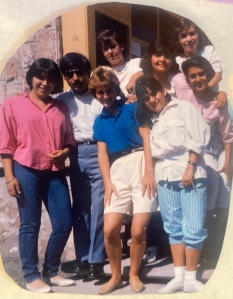 My new friends were kind as I stumbled through Spanish and laughed with (mostly) me as I made mistake after mistake, including asking my new friend, who was eating a chocolate covered marshmallow on a stick, “¿Cómo está tu pedo de monja?” I’ll never forget her stopping mid-bite, looking at me, and laughing, “¿Qué?” I had learned that marshmallow in Spanish was pedo de monja, literally “fart of a nun.” Turns out, that is absolutely not the word for marshmallow in Chihuahua. That’s the day I learned the word bonbon and it’s stayed with me ever since.
My new friends were kind as I stumbled through Spanish and laughed with (mostly) me as I made mistake after mistake, including asking my new friend, who was eating a chocolate covered marshmallow on a stick, “¿Cómo está tu pedo de monja?” I’ll never forget her stopping mid-bite, looking at me, and laughing, “¿Qué?” I had learned that marshmallow in Spanish was pedo de monja, literally “fart of a nun.” Turns out, that is absolutely not the word for marshmallow in Chihuahua. That’s the day I learned the word bonbon and it’s stayed with me ever since.
By Christmas I could understand the gist of things and say enough to convey the main idea of what I wanted to say. I learned to only use Usted with anyone older than me or in a position of respect. It still sounds like fingernails on the chalkboard when I hear people use the informal tú with people who deserve Usted.
I learned very soon to always use Usted with Mama Lila, Señora Miriam’s mother. She was a grand lady in a grand house in a beautiful area of Chihuahua. We drove through a canopy of trees to drive up the winding driveway to her home. I can still remember the smell of her perfume, the soft paper-thin texture of her cheek when I kissed her in greeting. An elegant staircase wove up and around the wall to the balcony bedroom doors above. Sun steamed in through the kitchen windows at her home, sometimes dappled by leaves.
Libradita cooked and cared for all of us within our home. Oh, what I would give to be able to go back in time and watch as she made flan! I was so taken with the Raramurí (Tarahumara) women and girls of the mountains surrounding Chihuahua. Their many layered skirts moved as they walked, sprayed around them when they sat. Our class took a field trip up into the mountains for a weekend not long after I arrived. I hardly understood a word of anything said around me. What I remember was the incredible generosity how my classmates treated me, how bitterly cold it was at night in the mountains, and the two young Raramurí girls who came with babies on their backs.
I turned 17-years-old in March of that year and my friends celebrated with a cake. I look at this photo now and wonder where these now women and about their lives. Oh, and mi querida amiga, Manena. Oh, did we laugh! And, we loved to go get frozen yogurt at Zum Zum. I always added mango and coconut to mine.
Lupita took me to the market and showed me what to look for in the fruit, how to choose the vegetables. I still hear her voice, her laughter.
I’ve had many other chapters in Spanish of my life. All builds on my life and experiences in Chihuahua. When I went to study in Spain, I learned that my Spanish was filled with Mexican expressions and vocabulary. In Costa Rica, I learned that my accent sounds Mexican.
When I began to learn about second language acquisition, I scrolled back through my memories and experiences and the theories found fertile and familiar places to land.
I wonder now that I listen to so many audiolibros narrated by Spaniards, Argentines, Mexicans, and Chileans what impact this has on my Spanish.
I will always grateful for this time—the experiences, friendships, inspirations, and love that have come from when I was 16-years-old and experiencing all. I feel the world would be an infinitely kinder place if all could experienced living and learning in another language, another culture. I imagine the empathy this might create if those who know experience the dominance of their own language could experience life through the lens of other languages and cultures.
A shared language opens worlds and windows of connections and relationships.
I am forever grateful.



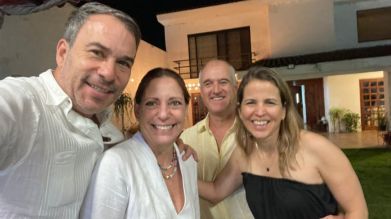


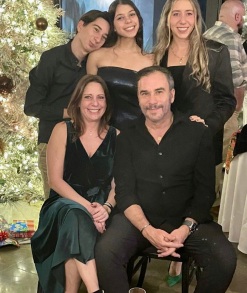



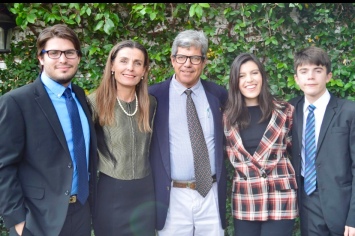



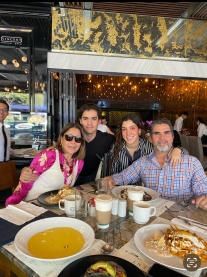


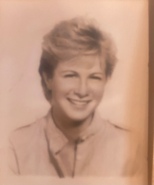






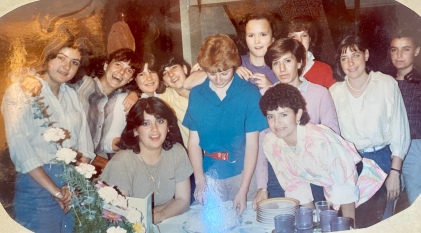

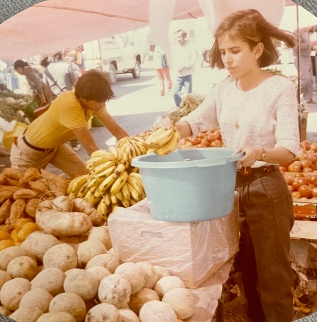



March 4, 2024 at 7:46 pm
This is such an amazing and heartwarming story, Dawn! To be ab
March 4, 2024 at 7:24 pm
How SO fun!!! This part of” social media” is fun!